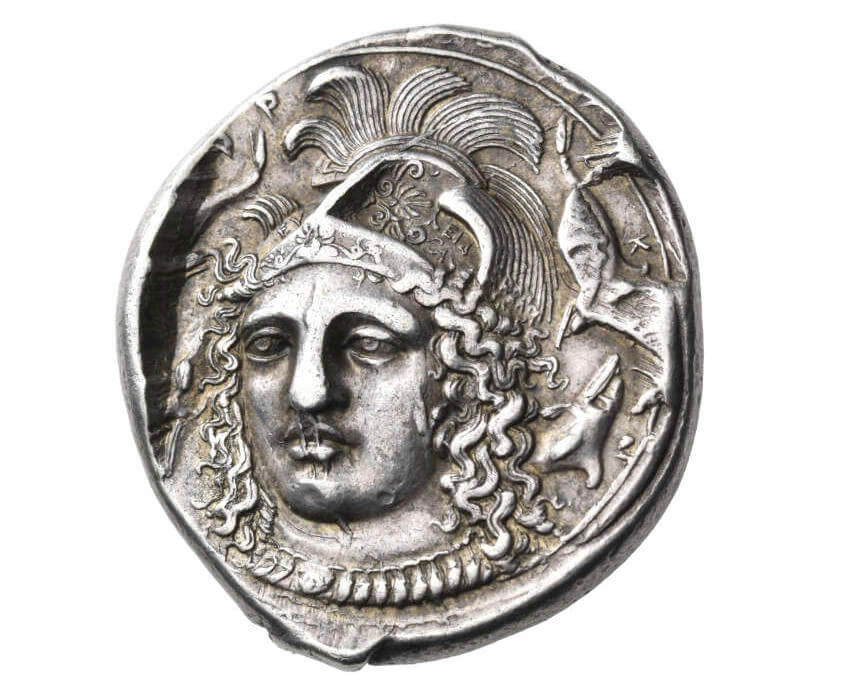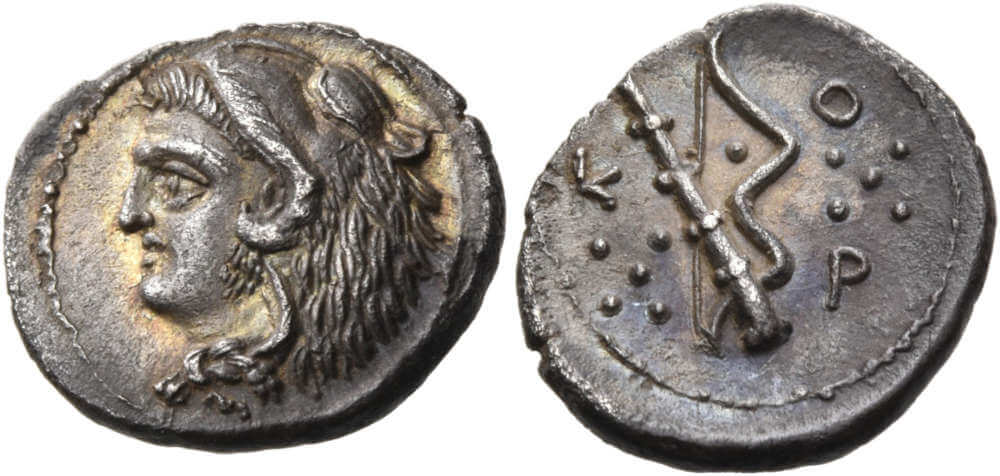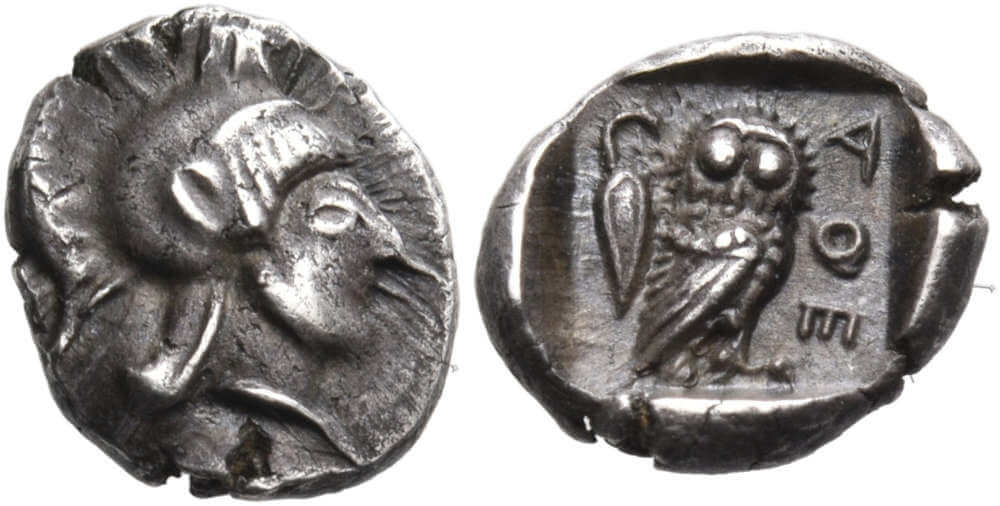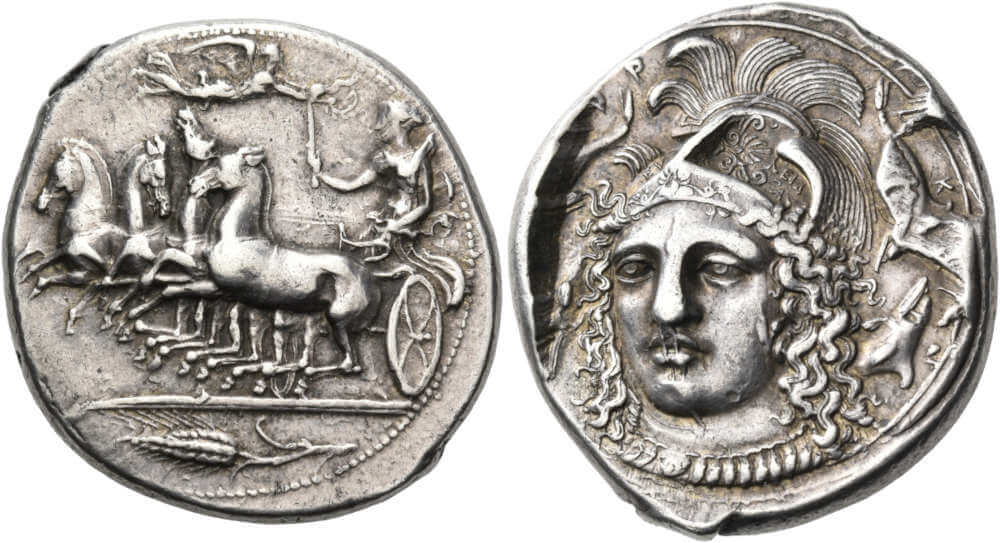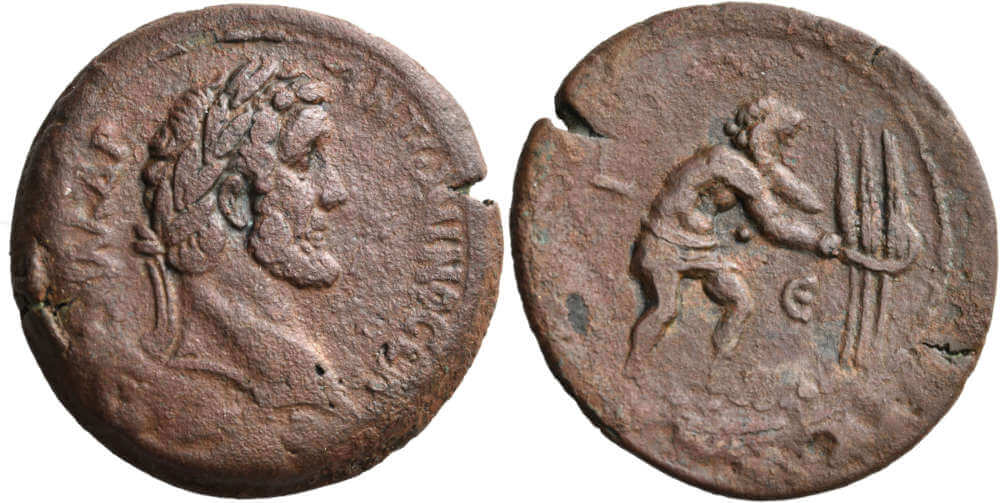Greek Silver Fractions in the Nomos Spring Auctions 2023
Nomos AG
Nomos 26-28
Coins
21-22 May 2023
CH-Zurich
Alan Walker presents the upcoming three Spring Auctions from Nomos AG. The auctions 26-28 will be held from 21st to 22nd May 2023 in Zurich. The auctions feature a selection of important, interesting and high quality coins from various collections:
Nomos 26: Greek Silver Fractions
Nomos Auction 26 is a first for us – in fact it is a first for anyone – since it is devoted solely to Greek silver fractions: ranging from hexantes and tetartemoria to hemidrachms and tetrobols; and, geographically, ranging from Massalia on the northwest coast of the Mediterranean all around to Kyrene on the southern shore. The 550 coins included in Nomos 26 are a selection painstakingly chosen from the biggest private collection of Greek fractions ever formed (other parts will primarily be appearing in forthcoming obolos sales). The quality of the engraving that appears on some of these coins is simply outstanding, often surprisingly so given how tiny so many of them are. As you go through the lots you will see coins, that had they been the size of drachms – or didrachms, or tetradrachms (!) – would have had astronomical estimates, but since they are so small, they seem to be so very reasonable. For now…
Herakles was a very popular deity all over the Greek world and beyond. Of course to modern numismatists he is best known from his youthful “portraits” on Alexander the Great’s lifetime and posthumous coinage, but he was an equally popular type on fractional coins from a plethora of Greek mints. We have a whole gallery of those “portraits” in Nomos 26:
- Lot 1 Massalia, obol, c. 485-470 BC (est. 450 CHF);
- lot 31 Tarentum, diobol, c. 325-280 BC (est. 450 CHF);
- lot 47, Herakleia, diobol, c. 432.420 BC (est. 300 CHF);
- lot 71, Kroton, dekonkion, c. 350 BC (est. 1500 CHF);
- lot 140, Longane, Sicily, litra, late 5th century BC (est. 600 CHF);
- lot 266, Archelaos, king of Macedon, triobol, 413-400/399 BC (est. 300 CHF);
- lot 319, Thebes, obol, c. 395-338 BC (est. 250 CHF);
- lot 498, Mallos, obol, c. 385-375 BC (est. 250 CHF);
- lot 521, Uncertain mint in Cilicia, probably Tarsos, obol, c. 370-344 BC (est. 350 CHF);
- lot 526, Uncertain Cilician mint, hemiobol, c. 375-333 BC (est. 200 CHF).
Isn’t this an amazing group!!! We have youthful, beardless heads (lots 31, 71, 140, 319 and 521) and mature, bearded ones (lots 1, 47, 266, 498 and 526); all show us a Greek hero, though the one from Massalia (lot 1) looks as if he was engraved by someone steeped in a rather un-Greek artistic tradtition; and the Herakles’s head on the little – it’s only 7 mm in diameter! – Cilician hemiobol (lot 526) not only has somewhat “Persian” features, but his lion skin headdress has a flat top like a kyrbasia!!
But we also have full figures of Herakles fighting the Nemean lion or his other foes…
- Herakles is standing and grappling with the lion on a Tarentine diobol; c. 325-280 BC (lot 32, est. 350 CHF): Lot 32
- Now he is kneeling and grappling with that lion on a diobol from Herakleia; c. 432-420 BC (lot 48, est. 150 CHF): Lot 48
- On this Tarentine diobol of 380-325 BC (lot 29, est. 450 CHF) he is having a well-deserved rest after the fight: Lot 29 – Interestingly enough, instead of sitting on the usual boulder covered by a lion skin, he is sitting on a stool.
- And, finally, one should not forget that he started fighting beasts when he was just an infant. Here he is, again on a Tarentine diobol (lot 44, est. 500 CHF), strangling two pesky snakes: Lot 44
In fact, Greek fractional silver coinage, which was issued in the approximately 400 years between their first appearance and the replacement of all silver fractions below the hemidrachm by bronzes, displays an astonishing variety of types. Some are just miniature versions of larger denominations, like the Athenian obols that are basically tiny tetradrachms…
like this one (lot 334, est. 800 CHF), which dates to c. 500/490 BC (or to c. 510 according to one great scholar). She is quite a beauty and was once owned by Virgil Brand; that means she must have been found no later than the late 19th century.
- But others are variants of larger pieces, like this obol from Nagidos (lot 512, est. 350 CHF), which could have been a stater, and has a head of Pan on the obverse and a head of Dionysos on the reverse…
- or this obol from Samaria, which dates from c. 375-333 BC (lot 541, est. 500 CHF)…
Nomos 27: Selections from the Eidswick Collection
From the small silver denominations of Nomos Auction 26 we can now turn to the 100 gold, silver and bronze large ones of Nomos 27 – selections from the Eidswick Collection. These are quite special coins too!
- This is lot 1014 (est. 7500 CHF), a wonderful distater from Thourioi dating to the first half of the 4th century BC. It has a wonderful pedigree going back over 125 years: Jorge Abecassis, Robert Jameson, August Delbeke, William H. Woodward and Sir Edward Bunbury!!!
- The pedigree of the following coin only goes back to Stack’s Price sale of December 1996, but you can be sure that all the previous owners of our Thourioi would have loved to own this piece too! This tetradrachm of Katane, struck c. 410-403 BC and signed by the artist Herakleidas (lot 1030, est. 85,000 CHF) bears a head of Apollo of great intensity and beauty. He is an ideally handsome, youthful god, but he is not shallow or insipid in any way, and he is certainly not someone to take lightly. The calmness of the portrait of the noble and potentially dangerous god on the obverse is quite a contrast to the violent action on the reverse – the winning chariot going past the turn post and Nike flying to crown the driver!
- Now we travel from the eastern shore of Sicily to the southwestern, to the mint of Selinos, c. 455-440 BC. This is a didrachm (lot 1042, est. 15,000 CHF) that shows us a youthful Herakles in the process of capturing the Cretan Bull. After stunning the bull Herakles brought it, as requested, to King Eurystheus of Tiryns who, quite alarmed by the creature, then let it loose! It finally wandered off and ended up in Attic Marathon, where it was killed by Theseus (but that is another story). On the reverse we have a scene of the river god Hypsas sacrificing, accompanied by a serpent, a heron and a parsley leaf. This coin was once owned by the Lloyds, father and daughter, who gave it to the British Museum, which deaccessioned it as a duplicate. For a very extensive discussion of this coin – to big for the printed catalogue, see the web version on our site.
- Finally, let’s go from west to east, to Lycia, and to the city of Zagaba, during the time of the dynast Wekhssere II, c. 400-380 BC (lot 1098, est. 25,000 CHF). What is really extraordinary about this coin is that it bears a particularly ambitious nearly facing head of Athena Parthenos on its reverse, copied directly from the head of the same goddess that appeared a few years earlier on the reverse of a Syracusan tetradrachm by the engraver Eukleidas (lot 1045, est, 125,000 CHF)! Compare the two as shown below. While it is missing the dolphins of Eukleidas’s version it is otherwise a remarkably close copy: it seems certain that the artist who cut the Lycian dies must have had a cast or a lead strike of the Syracusan coin in front of him as he cut his dies.
Even the details of the hair are almost exactly the same!!! This is yet another example of the interconnections between artists and engravers in ancient times; they simply must have sent samples of their work to their friends and colleagues all over the Greek world.
Nomos 28
But, of course, there is another sale – Auction 28! This catalogue is a more traditional catalogue, with coins of differing periods – Greek, Roman and Byzantine – coming from numerous consignors. What they do have in common is how attractive and interesting they are! There are so many favorites, though…here are a few:
- Here we have a tetradrachm from Abdera, struck c. 473-449/8 BC (lot 1140, est. 7500 CHF). What is special about it? Well, look at the overall elegance of its design: the great care taken to show the griffin’s every feather and every hair, and the natural way he seems to be rocking back on his hind legs; and with what graphic mastery the reverse design has been made – the beautiful lettering, the ivy leaf, and the fine kantharos!
- This coin is a wonder! Lot 1223 (est. 5000 CHF), a tetradrachm from an uncertain military mint in Caria, struck c. 341-334 BC, shows a particularly powerful, and beautifully detailed, Persian king on the obverse. Powerfully muscled and with an intent expression, he draws his bow, just about to let his arrow fly and hit its target. On the reverse we have a Persian cavalryman, riding a galloping horse with a carefully tied tail, and preparing to hurl his spear. This is such an impressive coin!
But now for something completely different…
- This is a very rare Alexandrian drachm, struck in Antoninus Pius’s fifth regnal year in Alexandria (141/2 – lot 1284, est. 1000 CHF). Its importance comes from its reverse, which shows us a bearded man reaping grain stalks. He may, or may not, be a real person, but he undoubtedly symbolizes the ritual gathering of the “first fruits” from a successful harvest. Was this piece struck to commemorate an actual harvest or was it issued in the hope of one?
- The denarii of Pescennius Niger are not as rare as they used to be, but they are still far from common! The reason for this is simply that after his defeat and execution by Septimius Severus his coinage was very rigorously recalled and melted down. After all, while he certainly considered himself to be the legitimate emperor, he effectively ended as a usurper; thus, both his coins and his family were not allowed to survive. While many usurpers were only able to strike coins at temporary or provisional mints, Niger controlled the great mints of Antioch and Caesarea; this meant that he had the services of highly talented engravers who could produce portraits from life. The portrait on this denarius (lot 1298, est. 1500 CHF) is quite simply outstanding and shows us what he really looked like, without a hint of idealization. Imagine what portraits there would be if he had controlled Rome and was able to issue sestertii!
- For the final coin from Nomos 28 we can turn to one that was struck during the short period between 29 January and November 474, in the name of the joint emperors Leo II and Zeno In fact, Leo II was the grandson of the previous emperor, Leo I (reigned 457-474) – he was the son of Leo’s daughter Ariadne (c. 450-515) and the Isaurian officer Tarasicodissa (he changed his name to the more acceptable Zeno), who she married in 467. Leo II became joint emperor with his grandfather in October 473, and sole ruler on Leo I’s death on 18 January 474. He was only 7 years old and seems to have died of disease (there is no reason to believe that either of his parents had him killed).
- So here we have a gold solidus (lot 1333, est. 2000 CHF) from that joint reign, struck in Constantiople, in the mint’s 8th workshop. What is interesting is that the coin tells us that Leo II is actually the senior emperor: his name comes first alongside the portrait of a generic emperor on the obverse and his is the short imperial figure on the superior right side of the throne on the reverse. This is a rare coin and, aside from a little striking flatness on the reverse, a very, very nice one!
View all lots of the three auctions in the auction catalog.
For further information, visit the Nomos website.




